#the flash 1959
Text
Sometimes when you read silver age comics you get smacked in the face with how old they are due to the racism and misogyny
And sometimes it's because something that is now common knowledge was just a debated hypothesis back then
#plate tectonics being treated as a theory#but like. not scientific defintion of theory#dc comics#fade reads dc comics#the flash 1959
35 notes
·
View notes
Text
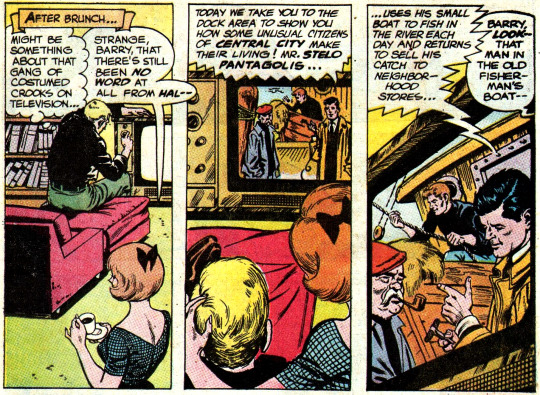
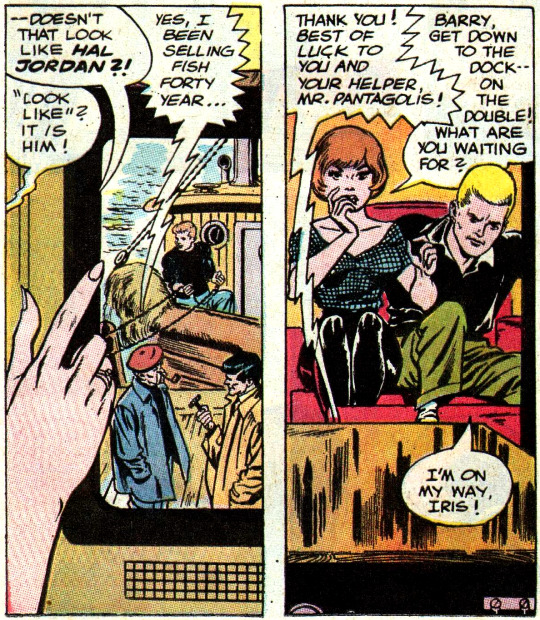
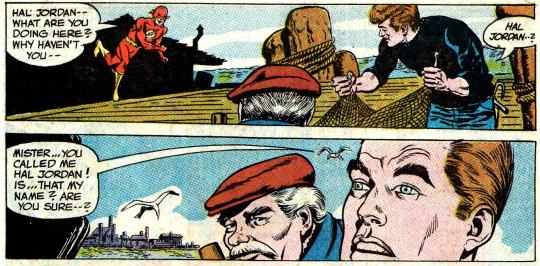
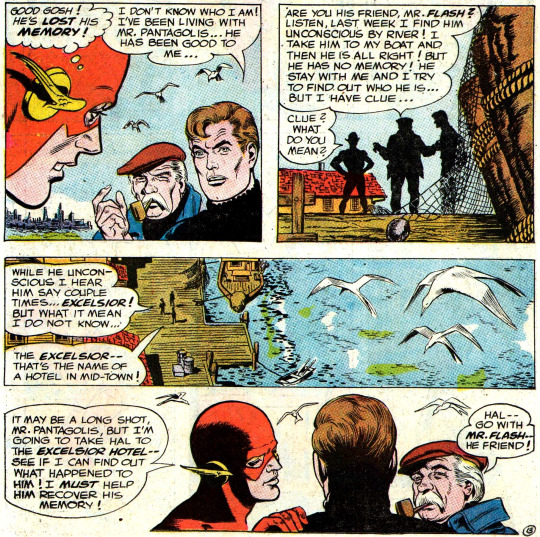
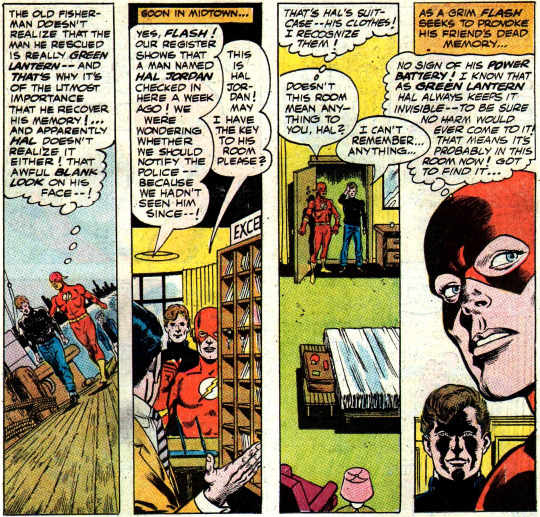
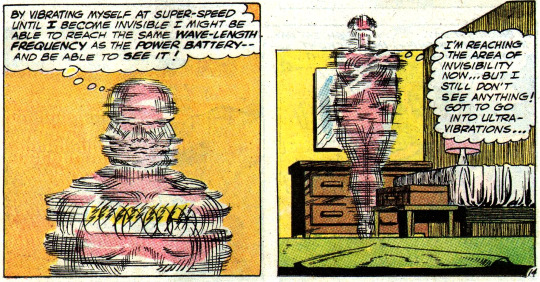

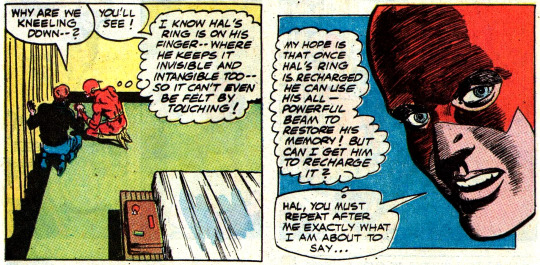
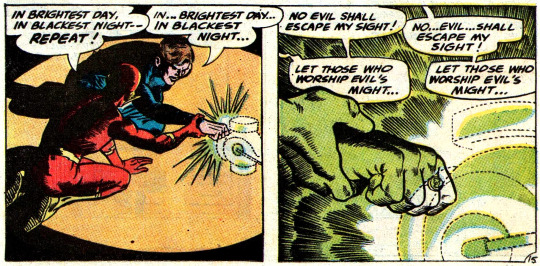
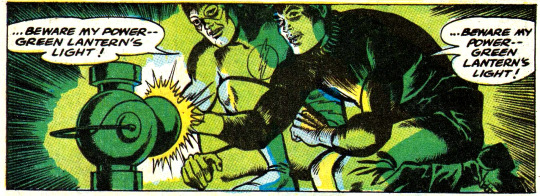
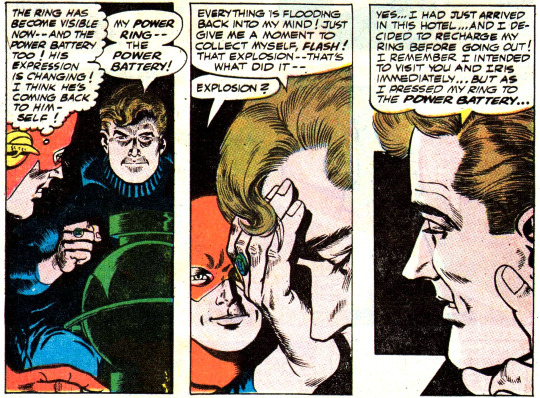



Is good to see my friend Hal Jordan again-- and watch him show other friends how I taught him to fish!
Hal Jordan in The Flash (1959) #168
(John Broome, Carmine Infantino)
#the flash 1959#hal jordan#green lantern#barry allen#the flash#iris west#dc#dc comics#john broome#carmine infantino#dcedit#comicedit#comicsedit#u can reblog#I CANT BELIEVE I OWN THIS. RUNS AROUND SCREAMING#great great beautiful story. remarkable story. homosexual story
8 notes
·
View notes
Text

love how one of the first things he does is just create a rainbow lmao
9 notes
·
View notes
Photo







I've worked in dozens of tombs. Seems the best part of my life has been spent amongst the dead. But I've never worked in a place that had such an aura of... of menace.
PETER CUSHING as JOHN BANNING in THE MUMMY (1959) dir. Terence Fisher
#horroredit#filmedit#The Mummy (1959)#Peter Cushing#Hammer Horror#flashing gif#filmgifs#horrorfilmgifs#classicfilmsource#fyeahmovies#dailyflicks#*
829 notes
·
View notes
Text
every single barry allen post i see has absolutely no clue what his personality is outside of fanon and it’s driving me insane
#do i need to make a post. do i need to make a post.#ik none of you have read flash 1959 but can you do me the favor of pretending you have#no shade to anyone im glad you’re having fun but im a comic elitist. lol.#.thoughts
316 notes
·
View notes
Text




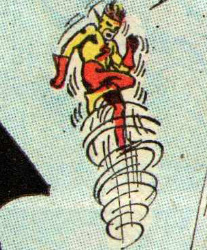



Compilation of random wally (and barry) panels I had saved
50 notes
·
View notes
Text

the running jumping & standing still film |1959|
#flashing gif#gif#the running jumping & standing still film#1959#camera flash#dick lester#peter sellers#bruce lacey#black and white#british film#important#iconic#influential
11 notes
·
View notes
Text
Hmmm

Okay I have a lot of thoughts here....
The costume is great and the time travel is a Flash classic. I think everyone would've preferred if she was adopted given the Garrick's history, although tbf they never explicitly state that she wasn't adopted. They could've adopted her on the day she was born or something.
Otherwise, The Boom is... lmao she's a boomer.
The dates are interesting though. REALLY interesting. Because she's almost exactly one month younger than Wally West. I'm not kidding, Wally was 10 in 1959 and his birthday is Jan 16. So Wally was born Jan 16, 1949 and Judy was born one month later on (Valentine's day) Feb 14, 1949.
And she doesn't elaborate on how she got her powers, huh? Was Wally, as the President of the Blue Valley Fan Club, maybe visiting the Central City chapter of the Flash Fan Club? Did Barry maybe try to impress two kids that night? (Technically three because Ace is retconned as being there now as well)
They've moved Wally's birthday up over the years so they might not acknowledge that but... yo she's the same age as him.
#i guess jay would've been in his own earth during 1959. are we still acknowledging that though? they started crossing over in 1961#so Judy would've met barry and wally when she was 12. two years after getting her powers if she got them at the same time as Wally#which is cool that gives barry and Wally two years to bond solo and jay and judy two years to bond solo before forming a larger family#although jay was retired until 1961 so... huh?#which part is getting retconned. what's the timeline#dc#dc comics#the flash#kid flash#wally west#judy garrick#jay garrick#the boom#flash fam
94 notes
·
View notes
Text
In the beginning, the Flashes were spaced by 24 years. Then twelve, then six, then every two weeks. The last one, was a week. In four days we could be seeing a speedster every eight hours until they are coming every four minutes. We should witness a double event within seven days.
#okay not really but i thought itd make a funny post#because sometimes it seems like there are SO many speedsters and new flashfam characters get created more and more frequently#like this could totally be a flash plotline#two points for anyone who knows what this shitpost is referencing#katetakes#jay 1940#barry 1956#wally 1959#jesse 1992#bart 1994#jenni 1994#irey and jai 2005#ace 2014
9 notes
·
View notes
Text

#tw flashing image#tw flashing images#barbie 1959#vintage barbie#barbie#barbie movie#comics#cartoonist#ink#ink drawing#cartoon#illustration#comic book artist#comic books#drawing#barbie 2023#hi barbie#barbie gifs#amylendoodlebug
0 notes
Text
Silver age barry is the worst. Iris dumps him for being late one too many times so he uses mirror masters technology to make it look like there are images of him all over so she'll think she's just naturally thinking about him a lot and missing him and take him back. Then later she cancels a date to help a guy with a research project and he's like "I bet she's actually just sweet on him"
17 notes
·
View notes
Photo
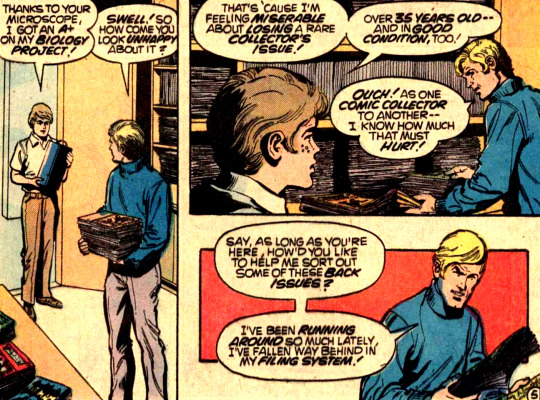


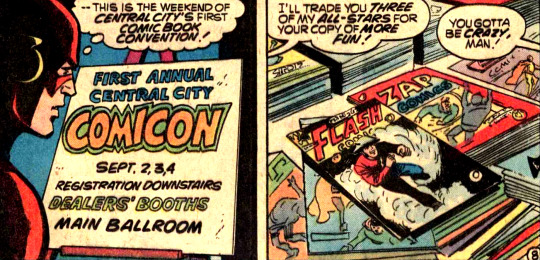
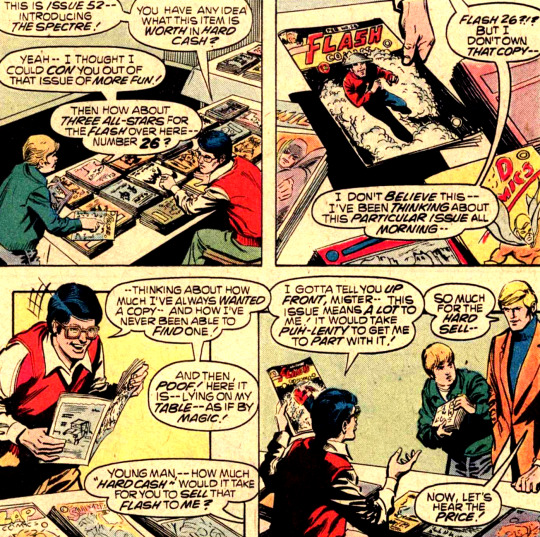
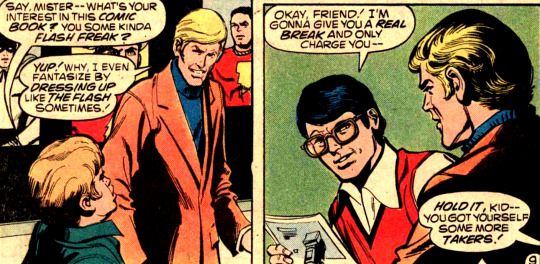
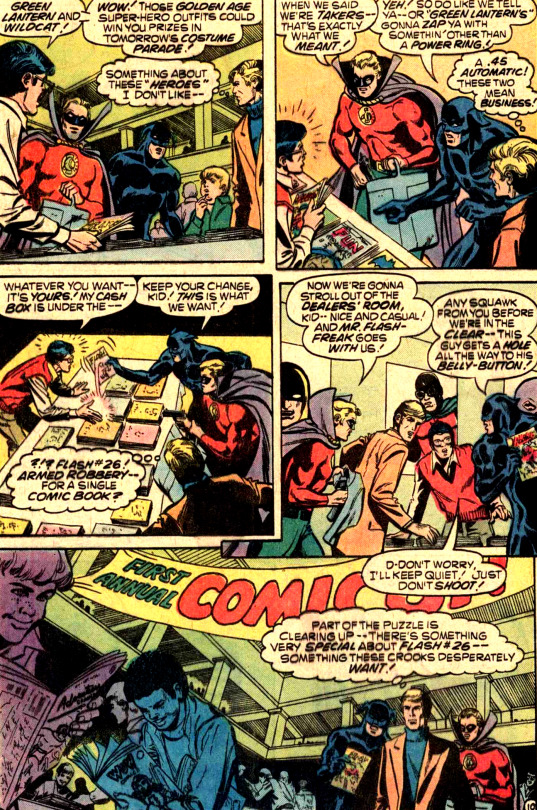
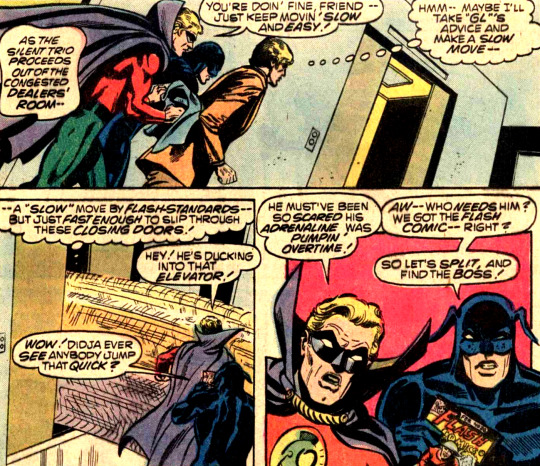

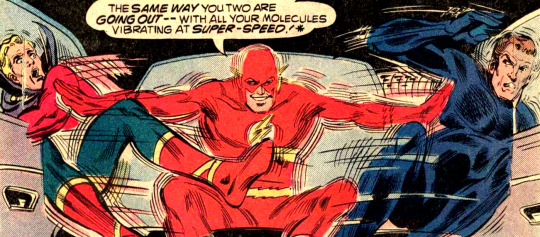
Say, mister-- what’s your interest in this comic book? You some kinda Flash freak?
Obsessed with Barry’s massive comic book collection, Central City’s first Comic Con, and the armed robbers dressed like Alan Scott & Ted Grant from The Flash (1959) #268
(Cary Bates, Irv Novick)
#the flash 1959#barry allen#jay garrick#the flash#alan scott#green lantern#ted grant#wildcat#on a technicality!#cary bates#irv novick#dc#dc comics#u can reblog#im sorry i have grown fond of certified flash freak barry allen and his twelve year old friend#present day barry sucks and should die (again) because he can no longer feasibly own all of flash comics 1940#alan cosplayer youre beautiful to me
30 notes
·
View notes
Text

this is actually such a fit dc should bring it back
5 notes
·
View notes
Photo








You would do well to remember the ancient saying: He who robs the graves of Egypt, dies!
THE MUMMY (1959) dir. Terence Fisher
#filmedit#horroredit#The Mummy (1959)#Hammer Horror#flashing gif#filmgifs#horrorfilmgifs#classicfilmsource#dailyflicks#fyeahmovies#*
684 notes
·
View notes
Text

begging dc to bring back the letters column (from the flash 1959 issue 168)
3K notes
·
View notes
Text
China’s economy is currently on the operating table, hunched over by surgeons, chest cavity splayed open, hooked up to a cardiopulmonary machine, surrounded by nurses staring at monitors flashing vital signs. It all looks rather grim.
This surgery, however, is not an emergency bypass. That would be too easy. China has had many of those already – stimulus packages, grand infrastructure projects and many rounds of directed lending.
Every two decades or so, going all the way back to the founding of the PRC in 1949, the surgeons get ambitious. These guys are mad scientists attempting a comic book trope – to create the ultimate superhero.
They want to inject super serum, replace skeletal calcium with adamantium and dose the patient with gamma rays, giving China the powers of shazams out the wazoo.[...]
In the lamented “pre-reform” era, China’s mad scientists engineered spectacular growth by increasing investment from a prewar 6% of GDP to 20% in the first Five-Year Plan, covering 1952-1957. This led industrial output to register a compound annual growth rate.
The Great Leap Forward accelerated this growth to 66% in 1958 and 39% in 1959 before crashing and burning in 1961 when mismanagement of communal farms and “backyard blast furnaces” caught up with the mad scientists.
Course correction starting in 1962 recovered all lost ground by 1965. According to economist Cheng Chu-Yuan, China’s GDP growth averaged 11% between 1952 and 1966, the eve of the Cultural Revolution. (T. C. Liu of Cornell and K. C. Yeh of the Rand Corporation have a lower estimate: 8%.)
More importantly, China built a full kit of infrastructure, machinery and equipment capable of driving future industrialization.[...]
Many analysts have a tabula rasa understanding of China’s reform era, as if there had been no economy before Deng Xiaoping. In reality, China’s industrialization started right after the formation of the PRC with some of the fastest growth recorded in the 1950’s and 1960’s. Even during the “low growth” Cultural Revolution, resources directed towards public health (for example, barefoot doctors) and primary education doubled life expectancy and quadrupled adult literacy by 1980 from pre-PRC levels.
The mad scientists are now at it again. They have about twenty years of new data not just on China but from the rest of the world. When Zhu Rongji was head surgeon, history had ended and markets reigned supreme. This time around, the surgeons are correcting for market irrationality and negative externalities. The next twenty years is again being determined on the operating table.
Three years ago, the surgeons pried open China’s chest cavity with the three red lines credit limits, instantly seizing the speculation driven property sector. Since then, they ripped out unnecessary organs like education companies, clamped the Ant Financial artery and eviscerated the video game industry.
All of this has caused spasms in vital signs from lackluster growth to rising youth unemployment. Wondering whether China will or will not stimulate the economy next quarter or next year is missing the forest from the trees. For the next few years, China’s economy will still be under the knife and whatever adjustments will merely be anesthesiologists and technicians nominally dialing the drugs up and down and adjusting the heart-lung machine to maintain vital signs.
What are these mad scientists trying to achieve? We believe President Xi Jinping’s 2020 target of doubling China’s GDP by 2035 stands. That is an average growth rate of 4.7% for 15 years. But beyond just a numerical target, it is important to figure out what superpowers China is trying to acquire. And just as importantly, what Kryptonite factors China is attempting to inoculate itself against.
China wants America’s Silicon Valley, but regulated; Japan’s car companies, but electrified; Germany’s Mittelstand, but scalable; and Korea’s chaebol conglomerates, but without political capture. It wants to lead the world in science and technology, but without cram schools. A thriving economy, but with common prosperity. Industry, without air pollution. Digital lifestyle, without gaming addiction. Material plenty, without hedonism. Modernity, without its ills. This is, of course, a wish-list and unrealistically ambitious. But these mad scientists sure as hell are going to try. They’ve developed a taste for it.
In college, early into the semester, we went through a ritual called course exchange. Students gathered in an auditorium to swap classes after sampling lectures for three weeks – satisfaction was not guaranteed. The strategy passed down to underclassmen applied to both course exchange and significant others: “Add before you drop.”
China is undergoing – but perhaps botching – the same process with a more party-esque slogan, “Establish the new before abolishing the old.”
The surgeons have been on a tear gutting the old. The big kahuna is, of course, the property sector. But right behind are platform monopolies, private education, financial services and video games. The new has been playing catch-up, with 5G equipment, electric vehicles, photovoltaics and wind turbines being leading examples.
From all appearances, the Industrial Party is in ascendance and China will double down on climbing the manufacturing value chain. The Industrial Party is a political identity that believes industry, science and technology should determine China’s future. Adherents believe that China’s strength lie in the technical skills of her population and thus favor hard-science, high-tech industries as opposed to services and business model innovations.
Therefore, Chinese politicians, whatever their predisposition, must find a way to create space for this next generation of scientists and technicians to develop themselves. They cannot be confined to a production line at a Foxconn plant. Maintaining social stability means finding a use for future scientists and technicians, which means pursuing industrialization. Is there any other way? The key variable for determining the course of China’s future development is thus the massive number of talented technical and scientific workers.
If mistakes were made, it would have been in sequencing and in faith – dropping before adding is a poor strategy in both love and course exchange. China’s mad scientists may have been too confident that electric vehicles and renewable energy would be followed quickly by semiconductors, pharmaceuticals and commercial aircraft.
Perhaps they have reason to be confident. Planning for this surgery has been in the works since 2015 with the Made in China 2025 project. China has been steadily eroding imports of high value added intermediary goods like batteries, precision parts and electrical components, flipping trade with South Korea from deficit to surplus.[...]
China never properly transitioned from its Soviet era Material Product System (MPS) of national accounts to the United Nation’s System of National Accounts (UNSNA) standard, leaving out much of services from reported GDP.
We calculate that China accounts for 22-24% of global GDP and 20-23% of global consumption. We also calculate that household consumption is 50-55% of China’s GDP, in line with global averages. China should easily be able to grow at 4.7% through 2035 with only a modest increase in consumption’s GDP share (5 percentage points over 10 years) without upsetting global economic balances.
In the reform period prior to Xi, everything was sacrificed at the altar of economic growth. In the new era, growth has been walked down from 9.6% in 2011 to an average of 4.7% in the Covid years (2020-2023) as an increasing litany of issues were given precedence. Debt however, soared over this time from 175% of GDP to over 300%. What exactly did all that debt buy?
When Xi assumed leadership of China, he declared that inequality could not be allowed to increase further. Inequality is perhaps the major Kryptonite factor of the American economy which China wasted no time in matching as the economy roared with market reforms.
While still problematic, inequality, as measured by the Gini coefficient, has steadily fallen since 2010 largely as a result of massive investment in urbanization, pushing people into cities and pushing cities up the tiering ladder.[...]
China also poured resources into stamping out last-mile poverty. While most poverty alleviation in China was through economic growth, recalcitrant extremely poverty could only be eradicated by concentrated marshaling of resources, from relocating entire villages to weekly visits by social workers.[...]
Since peaking in 2012, air pollution in Beijing has been cut by over 60%, with Shanghai falling over 50%. China, which used to dominate the list of most polluted cities, now only claims one spot in the top 20. None of this came cheap, from installing scrubbers in smoke stacks to increasing renewables to moving heavy industry to strict emissions regulations for cars.[...]
Before Hu Jintao handed the reins to Xi, Hu warned delegates to the 18th Party Congress in 2012 that “[corruption] could prove fatal to the party… and [cause] the fall of the state.” The popular opinion in the West is that Xi ended China’s highly successful reform era because of an ideological bent. This is off the mark. Xi was brought in to clean house as the wheels were coming off from excesses of the reform era.
Throughout Xi’s decade in office, there has been no letup in his anti-corruption campaign. In 2022, a record 638,000 officials were punished for corruption. While there haven’t been any large scale ideological appeals to the public, it’s a different story within the 98-million-member party.
During this time, free market capitalism and liberal democracies also faced their own existential tests. Success or failure going forward will depend on whether liberal institutions remain intact in the West and whether party discipline can be maintained in China.
What the PRC has had since 1949 is a governing party with the political autonomy to play mad scientist. [...]
Of course we live in the real world, not a comic-book world. The question in the real world has always been whether the economy can be engineered by mad scientists from the top down or is it best left to the invisible hand of the market? [...]
The standard economic opinion – against all evidence – is that China was economically stagnant before Deng’s market reforms. The thinking on this for the American economys is undergoing a transformation in egghead land – just how has neoliberal economics benefitted the American people over the past few decades?
In a Q&A exchange at a conference in Malaysia, Eric Li, the barbed-tongued venture capitalist, was asked, “Do you think top-down directives are sustainable in the long run?”
To which he replied, “It’s the only thing that’s sustainable.… That’s why America is failing today.” After World War II, Li said, the Americans “lost the ability to do top-down design.”
Dec 2023
99 notes
·
View notes